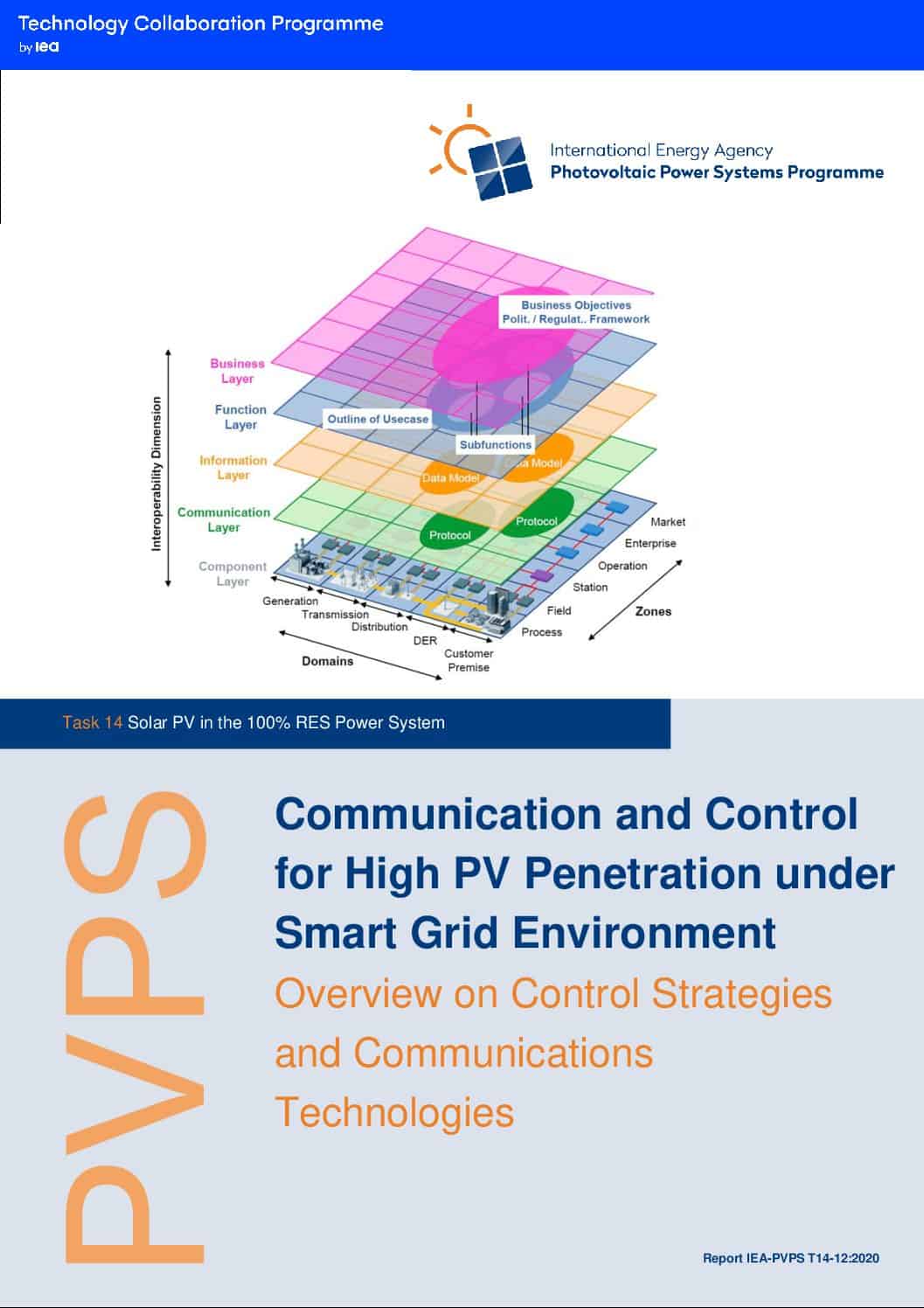Currently the integration of PV systems in the distributed systems follows a “fit and forget” rule. However, with the increasing penetration level, the intermittent and fluctuating energy availability of PV systems are introducing many challenges to existing grids. For example, with the household and industries having own generations, their electricity consumption is no longer predictable by utilities. Therefore, gathering information about the PV system and even controlling the PV systems is of highest importance to utilities. The smart grid, the next-generation of power grid, is designed to enable the massive deployment and efficient use of distributed energy resources, including PV. To support real-time information collection, analysis as well as automated control, the deployment of two-way communication and auto-control system for PV system integration is critical.
The IEA PVPS Task 14 Subtask C “PV in Smart Grids” will explore the communication and control for high penetration PV systems. The main intention is to overview the appropriate control strategies and communication technologies to integrate a high number of distributed PV systems into a smart electricity network. This Report summarizes the survey on the existing PV communication and control practice among task 14 participating countries as well as literature review of the state-of-the-art concepts for integration PV system under smart grid environment.
Based on the analysed state-of-the-art, literature review and the summarized smart grid projects, it has been found that in the conventional electrical power system infrastructure, communication systems have played an important role in some aspects, such as operation, market transactions, security and integration of large generation and distribution systems. On the distribution side, the electric network was mainly passive, operating in a feeding load scheme, with limited interaction between the supply and the loads. This required little or no communications at all. However, the integration of DERs, such as solar PV system in distribution system or customer premises has motivated the development of different control strategies to take advantage of distributed and controllable resources. This has highlighted the importance of last-mile communications networks as a supporting infrastructure to allow the different modes of operation of the electric distribution network.
The increasing penetration of distributed PV systems also request for a grid-scale coordinated control network. The control paradigm of current electrical power system is slow, open-looped, centralized, human-in-the-loop, deterministic and, in worst-case, preventive. At transmission level, the energy management system (EMS) coordinates system-wide decisions based on SCADA data. At the distribution level, traditional Volt/VAR control is designed mainly to cope with the slow variation s in load. However, the increasing penetration of solar PV with rapid and random fluctuations implies the future control must be real-time and closed-loop. The large-scale deployment of sensing, two-way high-speed communication infrastructure and the advanced PV inverters have provided the platform to realize the distributed, real-time closed-loop control architecture in the near future.
In the report, the communication and control system architecture models to enable distributed solar PV to be integrated into the future smart grid environment were reviewed. The existing communication technologies, protocols and current practice for solar PV integration are also introduced in the report. The survey results show that deployment of communication and control systems for distributed PV systems is increasing. The public awareness on the communication and control of grid-connected solar PV systems are raising. However, the actual development of communication and control system for distributed solar PV systems are still in the early stage. Many communication and technologies and control functions for distributed solar PV systems are still under experimental and demonstration phase.
In the following activities of IEA PVPS Task14 subtask C, it is necessary to review the PV projects in further details and collect the communication and control system architecture, analyse the technology and protocols and summarize the best practice for different application environment. The communication technology selection and implementation significantly affected by geographical, administrative, physical and logical reasons. The boundary conditions and transferability to other environment should be reviewed.
The major scope, objectives and the specific activities of Subtask C are defined as follows:
Scope: the Subtask addresses the communication and control for high PV penetration in distributed system with focus on the last-mile communications between customer promises to utility core communication network.
- The last-mile communication and control requirements for different services, including data throughput,
latency, reliability - Last-mile communication standards, technologies, protocols and implementations for distributed solar PV integration
- Typical control architecture and strategies for distributed solar PV integration
- The data management, cyber security and other IT-related aspects of PV integration Objective:
- Survey of smart grid architectures, standards on communication and control of DER
- Overview of last-mile communication technologies, protocols, interfaces
- Overview typical control requirements and architectures for high penetration of solar PV
- Overview of different practices on communication and control for integrating solar PV in distributed network
- Overview the IT-related requirements and practices for distributed solar PV integration (incl. data management, cyber security)
